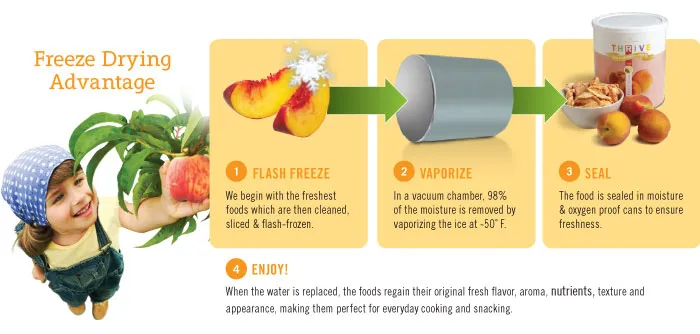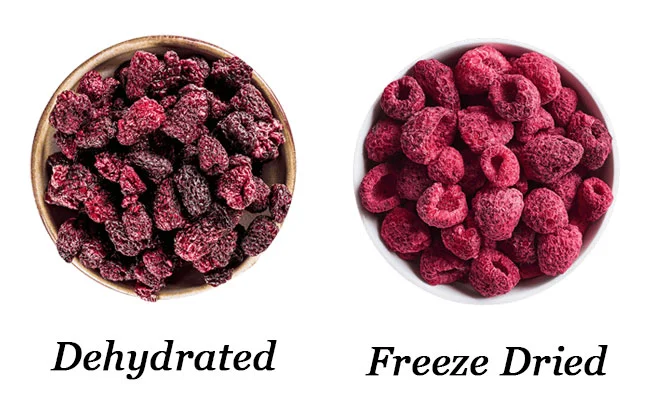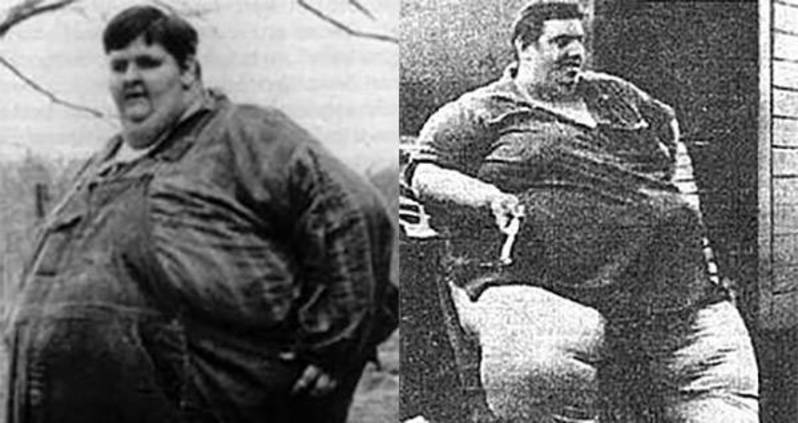introdustion for freeze dried vs dehydrated
Freeze Brying And Dehydrating are key methods for food preservation. Freeze-drying preserves texture and nutrients, offering a long shelf life of 25-30 years. Dehydrating, more affordable and quicker, retain most nutrients but with a shorter shelf life of 1-5 years. Choose based on your needs for long-term storage or everyday use.

Freeze-Dried
Freeze-drying is an advanced preservation technique that removes moisture from food while preserving its structure, flavor, and nutrients. The process involves freezing the food and then using a vacuum to remove the ice through sublimation, turning it directly into vapor without passing through a liquid phase.
This method results in lightweight, shelf-stable foods that can last up to 25-30 years when stored properly. Unique to freeze-dried foods is their ability to retain over 95% of their nutritional content, including delicate vitamins and antioxidants, making them a superior choice for long-term storage without compromising on health benefits.
dehydrated
Dehydrating is a method of food preservation that uses heat to remove moisture, extending the shelf life of foods. This process typically involves an oven, food dehydrator, or natural sunlight, making it an accessible and cost-effective option for home use.
Dehydrated foods have a chewy texture and concentrated flavor, and they can last 1-5 years depending on storage conditions. While some heat-sensitive nutrients like Vitamin C may be reduced, most nutrients remain intact. Dehydrating is ideal for preserving fruits, vegetables, and herbs, providing a convenient way to store food long-term.
Key Differences Between Freeze-Dried and Dehydrated

Process:
- Freeze-Drying: Food is frozen and then moisture is removed through sublimation, turning ice directly into vapor. This process preserves the food’s original structure and nutrients.
- Dehydrating: Moisture is removed by applying heat, often through an oven or dehydrator, which can alter the food’s texture and some of its nutritional content.
Texture:
- Freeze-Drying: Results in light, crisp foods that rehydrate quickly to a near-fresh state.
- Dehydrating: Produces chewy, dense foods that require longer rehydration and may have a different texture.
Shelf Life:
- Freeze-Drying: Provides an exceptionally long shelf life, up to 25-30 years, making it suitable for long-term storage.
- Dehydrating: Foods typically last 1-5 years, which is sufficient for shorter-term storage needs.
Nutritional Content:
- Freeze-Drying: Retains most of the original nutrients, including vitamins and minerals, due to the low-temperature process.
- Dehydrating: This may lead to some loss of heat-sensitive nutrients, like Vitamin C, because of the higher temperatures used.
Time:
- Freeze-Drying: A more time-consuming process, usually taking between 20 to 48 hours.
- Dehydrating: Generally faster, with most foods dehydrating in 4 to 12 hours.
Freeze-Dried vs. Dehydrated Foods: FAQs
Which is better, dehydrated or freeze-drying?
Freeze-dried food maintains most of its nutrients throughout the process, When deciding between dehydrated and freeze-dried foods, consider your priorities: freeze-drying offers a longer shelf life and better nutrient preservation, ideal for long-term storage. Dehydrating, while more affordable and convenient, is suitable for shorter-term use with a more intense flavor. Choose based on your storage needs and budget.
What foods cannot be freeze-dried?
Here are some of the few foods that aren’t suitable for freeze-drying:
- Fatty meats.
- Meat containing bones.
- Butter.
- Pure chocolate.
- Coffee beans.
- Honey.
- Jams and jellies.
- Mayonnaise.
Can you freeze dry in a dehydrator?
No, you can’t freeze dry candy with a dehydrator.
What are the disadvantages of dehydrated food?
Dehydrated foods have a higher calorie content by weight and can be high in sodium and sugars, depending on the food. In excess, these nutrients can cause weight gain and increase your risk of obesity, heart problems, and diabetes.
Can bacteria grow on freeze-dried food?
it doesn’t kill illness-causing microorganisms such as bacteria and viruses.
conclusion
In conclusion, freeze-drying excels for long-term storage and nutrient retention, making it ideal for emergency supplies. Dehydrating, however, offers a cost-effective and convenient option for everyday use. Your choice depends on whether you prioritize longevity and nutrient preservation or affordability and ease.



